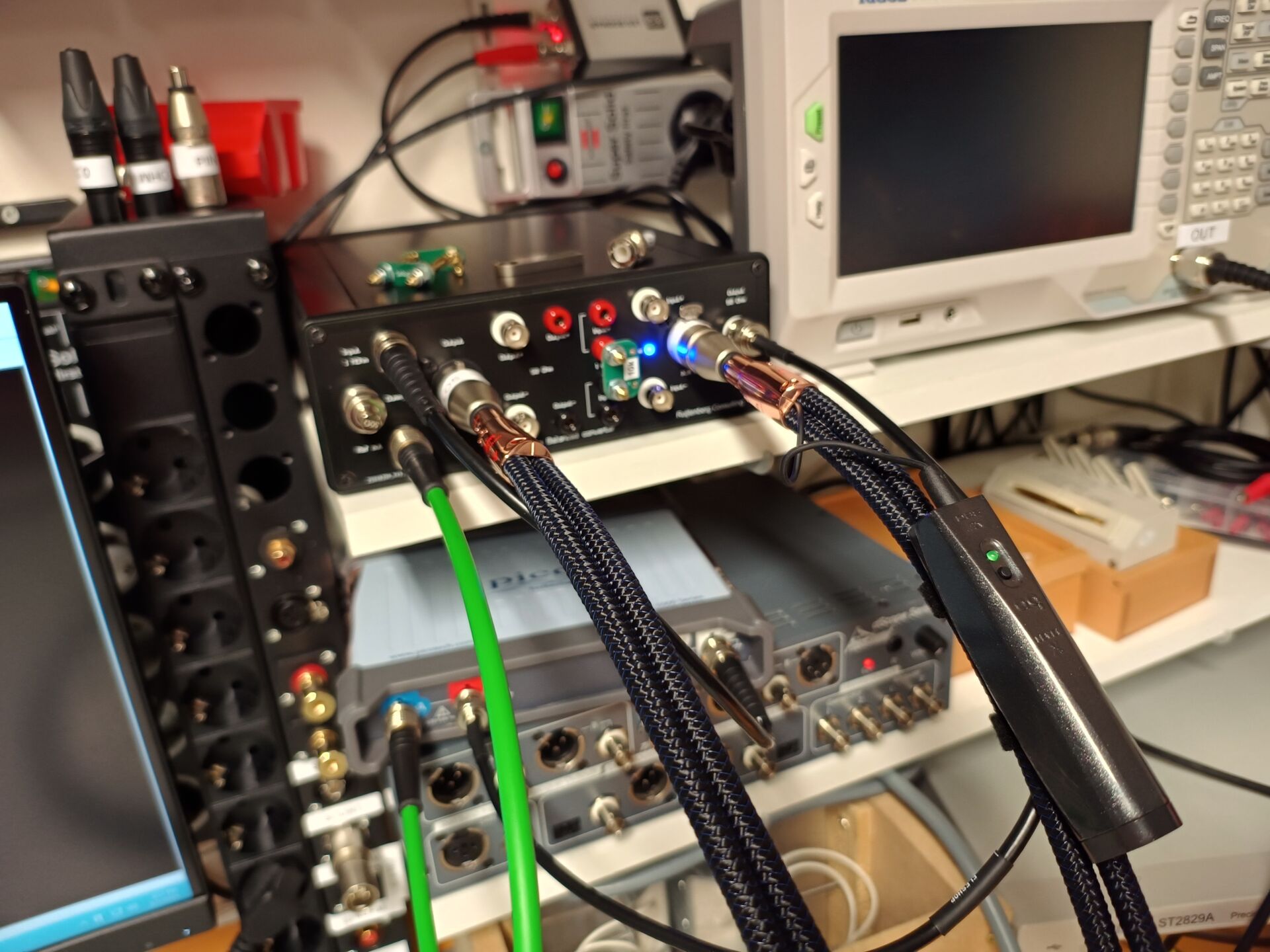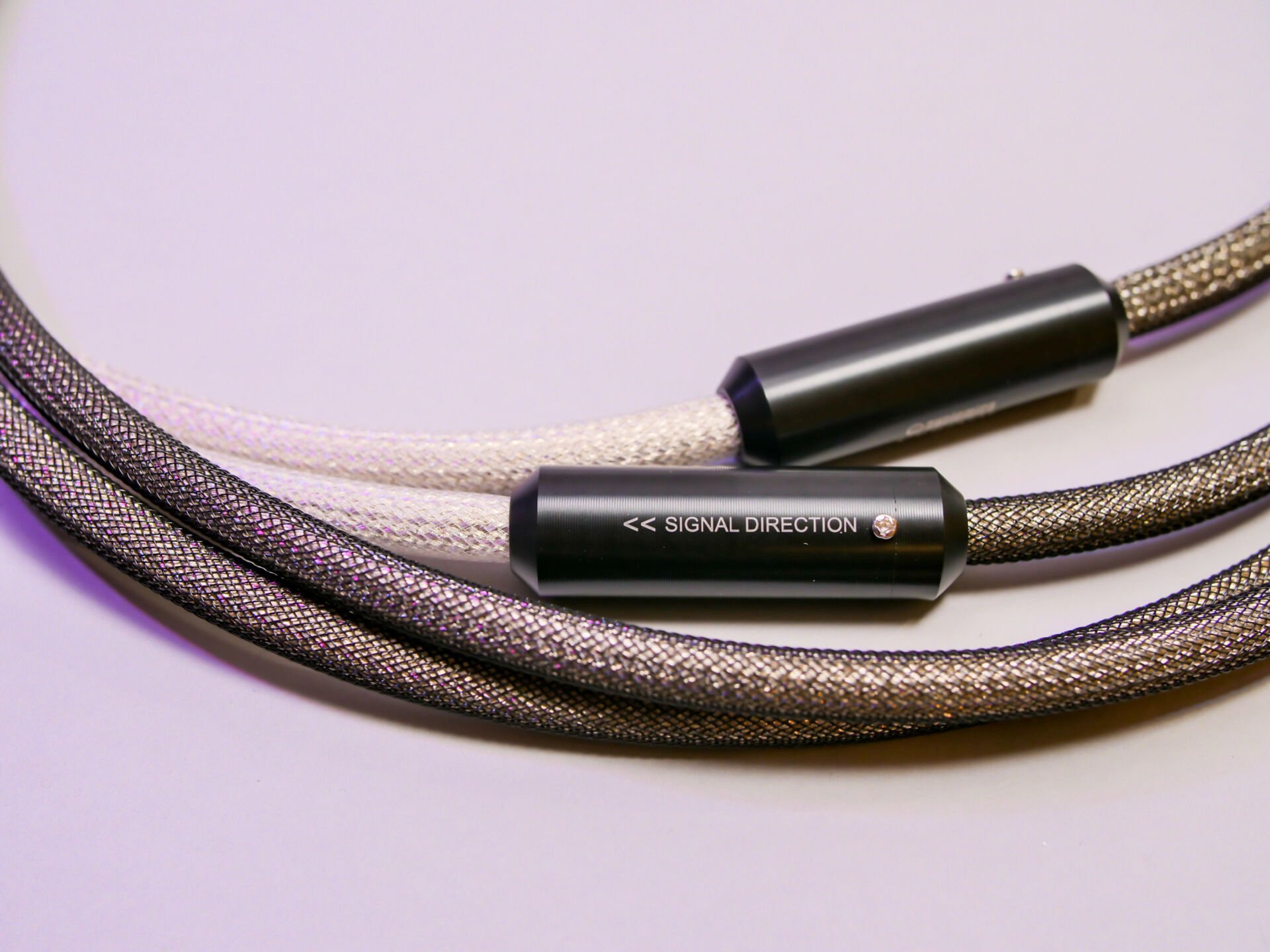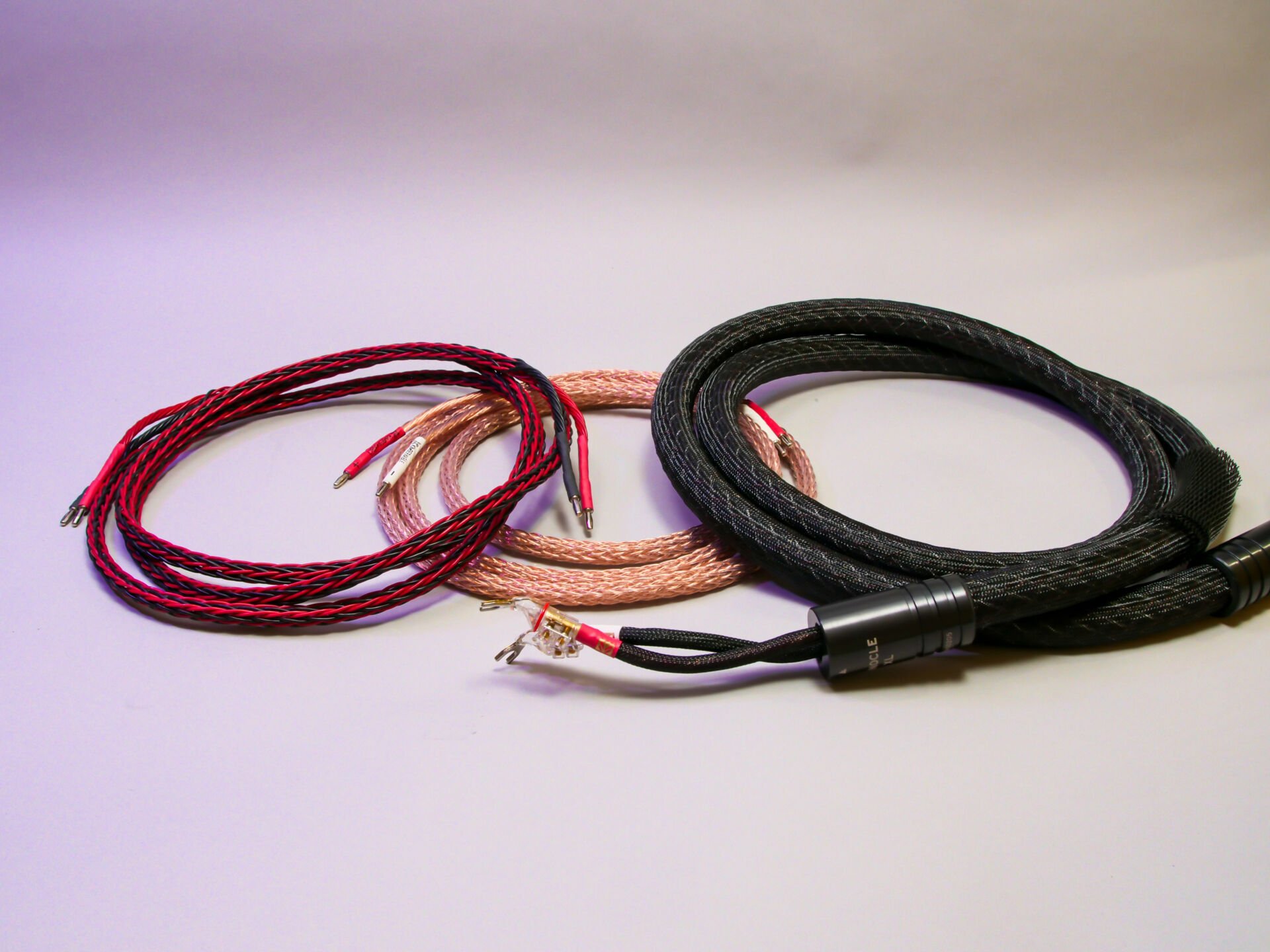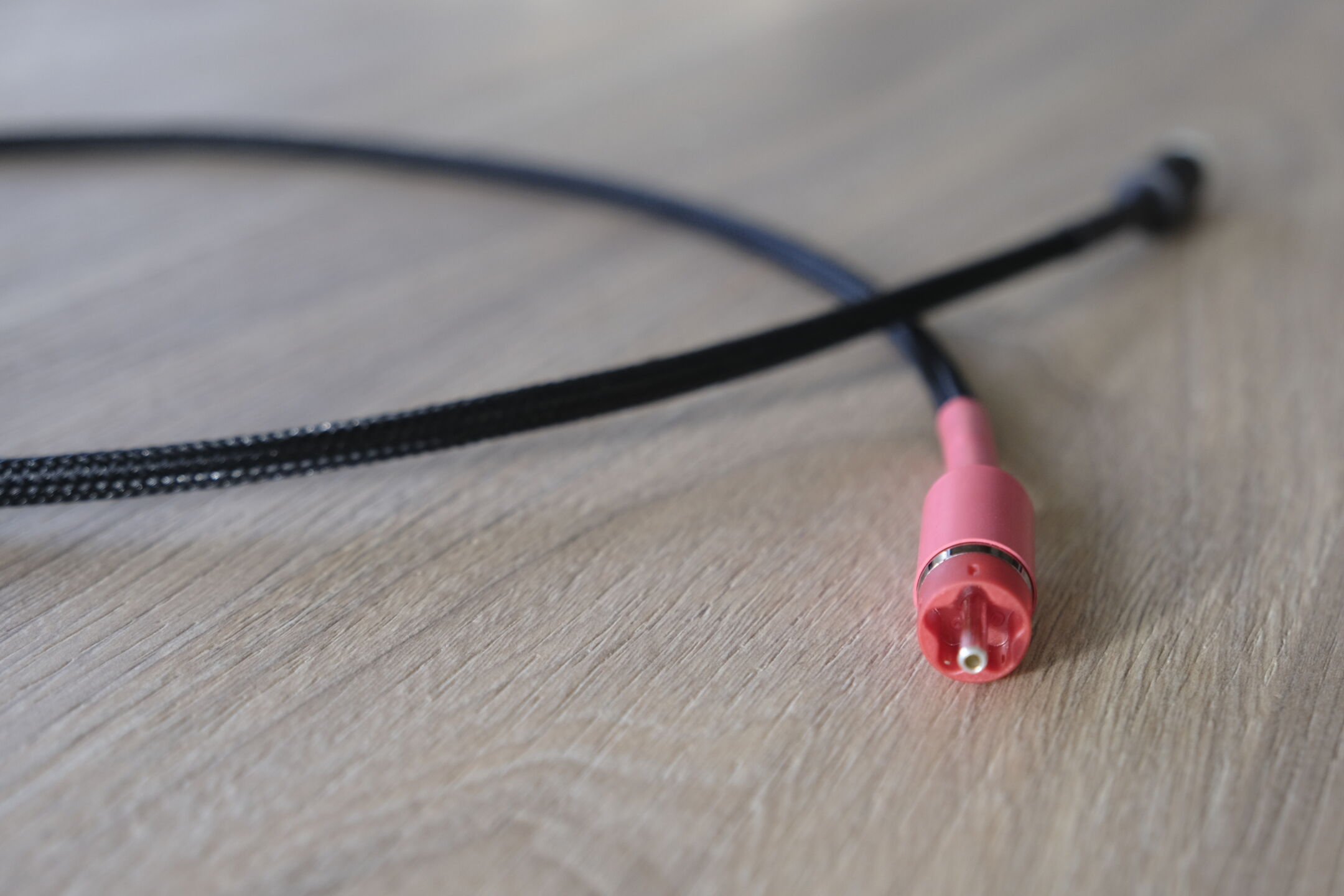

Intro
Contents
“All cables sound the same. All blind tests have already proven that!” A well-known statement within our lovely hobby. But is that really the case? Does our brain really fool us? We have listened to and thoroughly measured 32 interlinks. Spoiler alert: no, not all cables are the same.
Before we start describing the test methodology and elaborating on the results, we want to make two things clear: this test is NOT a competition. It has been purely an investigation into the measurability of cable differences. Why we started this investigation you will read in the next chapter.
Many thanks
Now a thank you note, should be placed in the last chapter. But we start with it. Purely because then more readers will see it. After all, we did not do this alone. That is why we first thank a few people and all participants. Without them, this test would never have come about, nor would we have been able to develop a sound testing method.
First of all, Cees Ruijtenberg has been a tremendous support. He helped us a lot when setting up this test. There was practically a hotline. Apologies for the many phone calls, but also incredible thanks for all the support and knowledge. And of course for designing ‘the black measuring box’ which was used a lot in this test.
In addition, Grimm Audio has been an inspiration for this test. The articles and papers as a result of our visit to the factory have triggered tremendously to go deeper into this. Thanks also for the pointers and ideas for additional measurements that again provide insight into the timing behavior of cables.
We would also like to thank Garth Powell of Audioquest for an incredibly quick and comprehensive response to the numerous emails we sent. We didn’t send two or three messages, but a lot more. And every email came with an open and honest response. We don’t see that a lot.
The cables
We asked every manufacturer and importer we have in our system for cables. The reason is that we want to collect as much hard data as possible. The more cables we can listen to and measure, the more likely we are to see real correlations and the more relevant this research will be.
Unfortunately, not everyone had the right cables – we requested 2 meters for the interlinks and 3 meters for speaker cables – or there may have been other reasons why participation was not possible.
In the end we got interlinks from seventeen brands and about and equal number for the speaker cables. That test will come later.
Below is the test list of cables we covered.
- Art Speak
- Audiomica RHOD Reference
- Audioquest Red River
- Audioquest Yukon
- Audioquest Black Beauty
- Audioquest Thunderbird
- Audioquest Dragon
- Chord Company C-Line
- Chris Cables Crystal Clear
- Chris Cables Carbokab 225
- Chris Cables Stage 22
- Dyrholm Vision
- Grimm TPR
- Grimm SQM
- Kimber Tonik
- Kimber Hero
- Mogami
- Nordost White Lightning
- Nordost Frey2
- Nordost Red Dawn
- PureCable Optimus
- QED 40i
- Ricable Primus
- Ricable Dedalus
- Ricable Magnus
- Ricable Invictus
- Stock Cable
- Supra DAC
- Transparent Plus
- VdH MC Silver
- Yeti NextGen
- Yeti Conductor
We hereby explicitly thank all participants for sending us the products.Even without them, this test would never have come about.







































I have a question. I think it’s a language thing.
In your measurement of “impedance”, is that actually the resistance value or equivalent of the looped conductors or is it the characteristic impedance of the cable? It doesn’t seem like the latter at all, which might be very interesting to understand.
Keep up the great work!
Impedance is complex resistance.
https://en.m.wikipedia.org/wiki/Impedance
That’s actually not my question.
There’s the loop resistance/impedance of the conductors and there’s also the characteristic impedance of the transmission line.
For example, there’s 50 Ohm coaxial cable. That’s the characteristic impedance. Zip cord has a characteristic impedance of around 90 Ohms. That’s all a combination of the inductance, capacitance, resistance of the wire, and so on.
https://en.wikipedia.org/wiki/Characteristic_impedance
This value rises considerably as you go below 100 KHz.
http://k9yc.com/TransLines-LowFreq.pdf
It is just the resistance. Not the characteristic impedance.
Great! Thanks!
I’m looking forward to your speaker cable tests.
Hopefully we will have it live at the end of april.
Jaap, first very well done. Probably the only way to do this better would have been if you had a reel of the cable 1000M long to determine better what the cable attributes are at 1M.
But I was talking to a good friend physics about this. Just like component differences, I think the sonic difference has to do with the designers. I always say this at a show, throw 10 designers in a room with the same parts and you get 10 different products.
In the cable realm you have metal, dielectric, insulation, wind, layout, shielding and directionality…. all these designers have their own take on what is important and that is why cables sound different.
Plus look at the variables you have on either end!
Thanks again, really great stuff!
Gordon
Hey Gordon,
I think you are right. And very nice analogy!
Hey all, there was/is an interesting exchange on this test and its results over on the Dutch side. Jaap has given me permission to use the translation I produced (Apple Translate) and repost it here for all to see. What I love about it is that this is exactly the kind of helpful result a researcher wants to see. Good research typically should generate more questions than answers, especially in its early stages. That’s normal and how the process and what it examines becomes more refined.
============================
April 6 2024 — Posted by Ad Braam (translation from Dutch) with Jaap’s responses following each question.
Jaap, upon further study I still have a number of questions (sometimes for confirmation) to be able to understand the research well. First of all, it is clear to me that the intention is to investigate whether a relationship can be found between the measurements and the listening tests and not so much to determine what is a good interlink (in my opinion very dependent on the rest of the audio system).
1. The ‘explanation of measurements’ says ‘Ideal there is no difference’. Is it meant: Ideal is there no difference when the voltage is increased from 0.3 to 1.5 volts?
A: There is ideally no difference in propagation when the voltage changes.
2. Does the voltage in an analog interlink vary between 0.3 and 1.5 volts?
A: A line output works at 2 volts at RCA. But of course the tensions vary with the music. I chose these 3 voltages to gain insight into small and large differences in amplitude.
3. Is the propagation time the difference in time it takes the pulse to go through the cable?
A: No. The propagation time is the time it takes pulse to go through the cable. So sometimes there is a difference in that when the amplitude changes.
4. How is it that the pulse that goes through the cable (green) is higher than the reference pulse (yellow)?
A: This has to do with the closure impedance, among other things. On the yellow that is 50 Ohm. On the green that’s 1 MOhm. That to imitate an exit / entrance.
5. As for noise measurements. Is it possible to explain the ‘spectral view’ in more detail. What do the green and brown lines mean? Because of this I don’t understand the statements between vd Hul and Grimm.
A: Spectral view is not noise measurement. This one displays decay. Often: extinction after a signal. Explaining this goes too far for a comment section.
6. What is the explanation that at lower frequencies the induction and capacity swings like this?
A: I don’t know exactly either. It has to do with wavelengths, among other things, but I also have to dive into this.
7. It is confusing that the vertical scale in the messenger plot is not the same when comparing Ricable and Mogami. I didn’t understand the conclusion at first.
A: You can’t do anything about that. The software scales itself and that is also necessary to keep it readable.
8. Propagation variance table very interesting. Do I understand correctly that ‘gets faster’ means that with increasing tension the propagation time becomes smaller?
A: Yes
9. Apart from the conclusions listed under the table, can you also conclude that a ‘good’ cable should have a low variance?
A: Yes. Less variation is better. Ideally it is 0.
There are a lot of questions, but hopefully I’m not the only one who has these kinds of questions.
END OF REPOST
it’s pure nonsense, what about the cheap connectors and simple wires inside a unit and i’d like to see these kind of things done by a university, not by a annoying guy which is close to the source……and all those terms:the highs are too promonent,but vague……for example, how do you know it’s not by bad wiring instead of the interlink. As an engineer micro-electronics i can say that you’re an indiot if you buy overexpensive interlinks, you’d better buy a more expensive amp
Thank you for the feedback.
Dear Richard. How do you explain the difference that is evident from the measurements of the cables?
Well, I’m a retired university researcher of 30+ years and I don’t have a problem with what these guys are doing. Is it the rigorous and pure scientific method backed up by statistical analysis? No. But I can tell you that this kind of casual but thoughtful and carefully-managed research, performed within their admitted and openly public constraints, has led to more complex and sophisticated follow-up by others quite often. After all, it is the repeated casual observations (yes, including the subjective) of others with sincere and deep interest in a subject that stimulate the start of funded research in a wide variety of fields. I would suggest to others who have the background to be helpful with ideas, money, and/or time instead of throwing bricks. We’re adults, not children. Carry on gentlemen, you’re doing fine.
Thanks Alan!
👍 I couldn’t think of a better response
I wonder if it would be possible to feed all of this tabular measurements, graphs, and subjective observations into an AI model and ask what characteristics are most correlated since it is so complex. Awesome effort guys. I can’t think of anyone else having attempted this publically. Mahalo!
Thank you! Maybe… Hmmm… Interesting thought.
Agreed
Is it fair to consider that the composite values shown in the All Data table, when coupled with the subjective observations, could hint at a kind of value proposition when MSRP is taken into account? You know…..loosely. Have to factor in the rationality of those doing the listening of course. 😉
I have looked at that as well, but haven’t found a logical link…
Regarding the rationality of the listeners or that the lowest composite value+observations:cost? Both equally…challenging I suspect. But I think there is some guidance that could be drawn or inferred from the latter.
I really tried to find a link between what we hear and what the data in ‘All Data’ says. What I did notice is that too high a capacitance or inductance is definately not good. Cables that show a decent distribution between the two mostly show a good sound balance.
The thing is: the data in that table doesn’t show the frequency response, nor the spectrum behaviour. And those two really gave insight in the performance of the cable. Along with the temporal behaviour (propagation variance).
There are other variables affecting quality. So its only part of the picture then. Not enough to guide a purchase decision. And, in the end, that’s also going to come down to buyer motivations, which is another can of worms. So I see what you’re saying. Still, this data provides a place from which you or others can build in the measurable areas. Valuable nonetheless. Well done.
Thank you. But the freq response and spectrum measurements are in this article. The thing is: they are not a simple value I can put in a table.
Good work 😉
I wish you would have done the tower and evergreen rca from Audioquest 😉
Hence my question : if someone is on a budget and need a coaxial cable , I usually advice an Audioquest forest as they are great for the money.
Is there an rca cable that you recommand also around 50€ ? Audioquest tower and evergreen would be the equivalent of the forest coaxial but they’re completely different type of cable 😉
Thanks !
(The rca are for a cd player and a rega io )
Ready the article. There are cables around €50 and less in there.
First, BIG shoutout to you guys for having the cojones to take this on. Just one look at the data sheet….HUGE undertaking. I have to think that this is a significant contribution to audiophiles everywhere who have been wondering. Perhaps it will stimulate follow-up on the part of others even. That’s what research is all about. Secondly, am I missing something? The data summary doesn’t show any values, Impedance-Inductance-Capacitance, for the Transparent Plus, yet it seems to show in its individual graphs. I’m sure you didn’t miss something so obvious, so can you explain to me? Thanks.
Hey Alan!
Thanks! I also hope that others will pick this up and make some progress. It’s needed :-).
The Transparent is sort of a weird cable. The values of impedance, capacitance and inductance are way higher due to the filter-network. If I would put them in the graphs, the scale would be messed up. That’s why I left it out.
Ah. Got it. Makes sense. Thx.